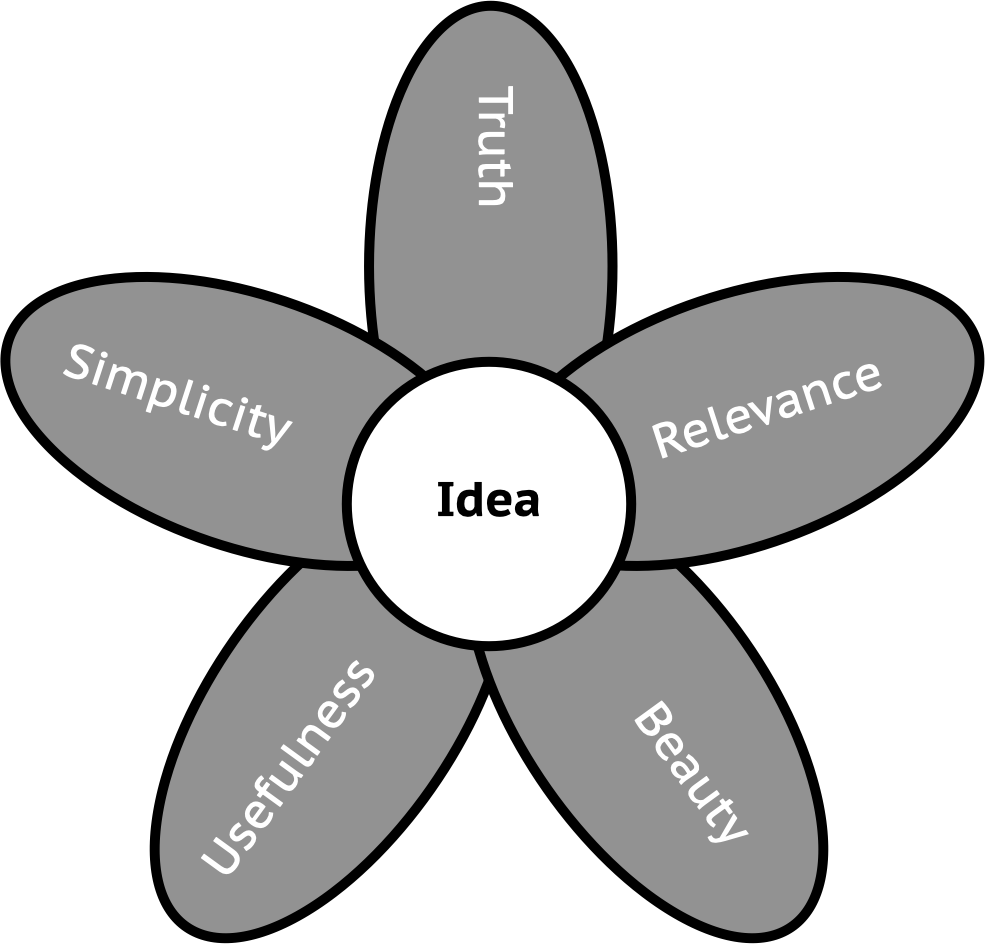How To Use Creative Techniques Within the Zettelkasten Framework
One of the greatest difficulties in understanding the Zettelkasten Method is to separate its specific characteristics from actual knowledge work. Or, how I like to phrase it: “Link knowledge, not notes.” Working with our Zettelkasten is the physical (or digital) manifestation of our thinking. It provides a framework that allows us to think through writing and to create an increasingly complex thinking machine that can help us think deeper than being on our own. The Zettelkasten Method provides a framework for our thinking, but does not prescribe what and how we think.

With the following, I not only want to present the wonderful idea of Lei-Fing Tseng, but by placing the idea in the framework of the Zettelkasten Method, I want to shed some light on the problem described above.
I saw Fei-Ling Tseng’s idea of the Compass of Zettelkasten Thinking in a video by Vicky Zhao. It is about a method of exploring the context of an idea:1
- take one idea (X) and put it in the centre
- imagine the four compass directions. each direction helps give definition to the idea in different ways.
- NORTH: “Where does X come from?” what are its origin? what group/category does X belong to? what exists an order of magnitude higher? zoom out. what gave birth to X? what causes X
- WEST: “What is similar to X?” what other disciplines could X already exist in? what other disciplines could benefit from X? what are other ways to say/do X?
- SOUTH: “Where can X lead to?” what does X contribute to? what group/category could X be the headline of? what exists an order of magnitude lower? zoom in. what does X nurture?
- EAST: “What competes with X?” what is the opposite of X? what is X missing? its disadvantage? what could supercharge X?
- The Zettelkasten structure created around the idea could look something like this:
- NORTH
- The Idea
- SOUTH
- EAST
- WEST
I think it’s a super clever idea, and I processed into my Zettelkasten right away. What I didn’t like was its designation. The “Zettelkasten Compass” has a too tight connection to the Zettelkasten Method. The compass is in fact a thinking tool that is applicable beyond the Zettelkasten Method. That’s why I’ve named it the idea compass in my own notebox and filed it in my toolbox of creative techniques. My reasons for my processing method are as follows:
The Zettelkasten Method is a framework within which we think, carry thought forward, merge thoughts, or separate their components. That we write notes, create new ones and link them in the process is merely the physical or digital manifestation of our thinking. Again: Link knowledge and not notes! The term “Zettelkasten Compass” implies too strong a limitation of this tool to the Zettelkasten Method. Therefore I have changed the label.
To clarify this, we can look at my knowledge flower that provides a similar idea. It is very similar to the idea compass as a thinking tool. The knowledge flower contains the thought at its core and five aspects of knowledge as one petal each:

The instructions can be written in the same form that Tseng used:
- Choose an idea and place it in the center.
- Think of each leaf as an aspect of the thought that is needed to fully develop it. The thought blossoms like a flower.
- Truth: Are there arguments for its truth? Is there empirical evidence for its truth? Is it free of self-contradiction?
- Relevance: To whom is the thought important? To whom is it not?
- Usefulness: What problem can be solved by the thought? Can it become a tool?
- Beauty: How does the thought promote harmony and elegance?
- Simplicity How can you make the thought simpler and easier to understand? Can the thought be used to simplify something else?
(The resulting structure in your Zettelkasten, however, depends on the individual thought).
Part of the similarity between the two tools comes from their common nature: both are closed creative techniques.
- Closed creative techniques are usually questions or sets of questions that provide a direction of exploration from a known starting point.
- Open creative techniques, on the other hand, are ways of exploration. An example of an open-ended creative technique would be to write a journal entry for a book character to get to know him or her better, or Mind-Mapping.
Another example of such a (closed) creative technique is the mini-character sheet based on my functional model of characters. This tool is also a set of questions that provides a direction for exploration.
Concluding
Tseng’s thinking tool idea is excellent for exploring a thought. But it is not a tool specific to the Zettelkasten Method. It is more: a tool that you can apply to any thought. My recommendation is definitely to include this tool of Tseng in your own toolbox (you do have a toolbox, don’t you…?).
The difficulty of the Zettelkasten Method is not to be found in its complicatedness, but in translating techniques and methods into the Zettelkasten Framework. Tseng has done an excellent job of that here. With a slight change of the name and the correct classification of this thinking tool in relation to the Zettelkasten Method, it is (hopefully) 2% better.
Her article The essence of the Zettelkasten method, demystified is a recommended read!
Update (2022-11-15): Vicky Zhao and Fei-Ling Tseng did a presentation and used the term “Idea Compass” in May which predates my article, so all credit goes to them. Check out their presentation if you want to see a presentation about this creative technique: Vicky Zhao & Fei-Ling Tseng: The Compass of Zettelkasten Thinking: Associative Thinking Made Easy
Christian’s Comment: I haven’t applied the flower in my notes a lot. Sometimes, when I struggle with classifying an idea, piece of knowledge, or thought, Sascha makes a sensible recommendation to use the flower to bring order to the chaos. By zooming in on each of the flower’s 5 aspects, it sometimes helps to figure out what is merely decorum that I don’t want to capture. Looking at the aspect of “beauty” often feels very weird in my day-to-day note-taking, but there definitely are beautiful code snippets, and there’s beauty to be found in software architecture, so reminding myself to keep an eye open for this aspect in my technical job is surprisingly helpful.
-
https://feeei.substack.com/p/the-essence-of-the-zettelkasten-method?r=bfn9h ↩